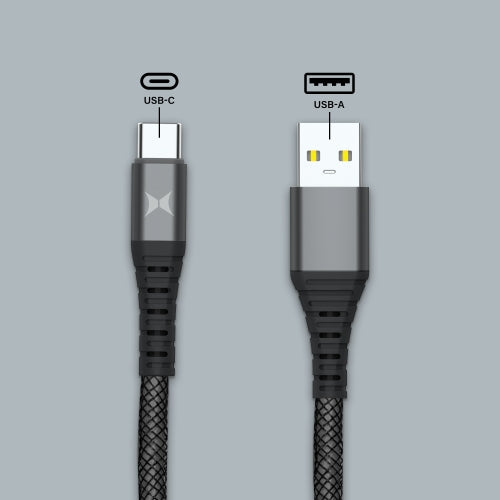Walk into any tech store today and you'll see two types of USB ports on almost everything: the familiar rectangular USB-A and the sleek, oval-shaped USB-C. While they might seem like just different shapes of the same thing, the truth is, the difference between them is massive, especially when it comes to fast charging.
If you’ve ever wondered why your new smartphone charges to 50% in just 20 minutes, or why a USB-C port can charge your laptop while a USB-A port can't, you’re in the right place. This guide will demystify the differences and help you understand why USB-C is the new gold standard for power and speed.
The Key Differences, At a Glance
1. The Physical Design: No More Fumbling
This is the most obvious difference. We’ve all experienced the frustration of trying to plug in a USB-A cable, only to flip it once, then twice, before finally getting it right.
USB-A has a wide, rectangular design that can only be inserted one way. It’s been the universal standard for decades, and you'll find it on everything from old computers to keyboards and flash drives.
USB-C has a smaller, oval-shaped connector that is completely reversible. You can plug it in either way, every time, without a second thought. This simple convenience is a game-changer and a huge reason why it’s becoming the new industry standard.
2. Power Delivery: Where Speed Comes From
While the physical design is a nice convenience, the real magic of USB-C lies in its power delivery capabilities. This is the feature that allows for true fast charging.
USB-A ports were never designed for high-power devices. In their earliest versions, they provided a mere 2.5 watts of power. While modern USB-A ports can support fast-charging protocols like Qualcomm Quick Charge, they typically max out around 12W to 18W. This is enough to fast-charge a smartphone, but it’s nowhere near what’s needed for a tablet or laptop.
USB-C was built from the ground up to handle serious power. When paired with USB Power Delivery (USB-PD) technology, a single USB-C port can deliver up to 100 watts of power (and even higher with the latest standards). This is why you can now charge a high-end laptop with the same cable you use for your phone—a feat that was impossible with USB-A.
Simply put: USB-C is capable of delivering significantly more power, which is the sole reason it can charge your devices so much faster.
3. Data Transfer and Versatility
Beyond just charging, USB-C is a single-cable solution for data, power, and even video.
-
Data Transfer: While USB-A is generally limited to USB 3.0 speeds (5 Gbps), a modern USB-C port can support the blazing-fast speeds of USB 3.2 (20 Gbps) and even Thunderbolt 4 (40 Gbps). This means you can transfer large files like 4K videos in seconds, not minutes.
-
Video & Audio: A single USB-C cable can replace an HDMI, DisplayPort, and a power cable all at once. This is a huge benefit for anyone who wants to connect a monitor to a laptop with a single, clutter-free cable.
So, Which One Should You Choose?
While USB-A is still widely available and a reliable connector for many legacy devices, USB-C is the undisputed future of charging. If you're looking for the fastest and most convenient way to power up your devices, USB-C is the clear winner.
Why Xtreme Cables embraces USB-C:
We believe in a future with less cable clutter and more power. That’s why our newest product lines feature a strong focus on USB-C technology, from our high-speed power banks to our durable USB-C to USB-C cables. We want to provide you with the fastest, most reliable charging experience possible.
Ready to upgrade to the next generation of charging?
Explore our full collection of USB-C accessories to find the perfect cable, wall charger, or portable power bank to keep all your devices powered and ready for anything.




Leave a comment
This site is protected by hCaptcha and the hCaptcha Privacy Policy and Terms of Service apply.